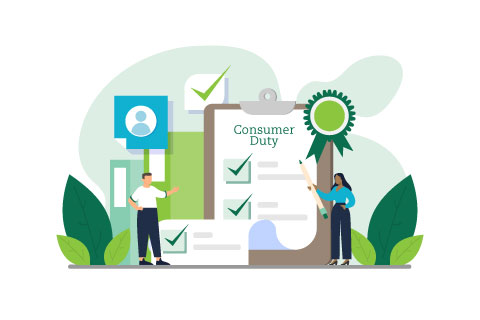Dubbed the biggest regulatory shake-up of the financial sector in a decade, the Financial Conduct Authority’s (FCA) Consumer Duty has been in force for a year now.
While it may still be too early to take a view on the long-term impact of the new regulation, now should be time to reflect on how things are developing. For example, whilst banking is a well-performing sector overall, our latest UK Customer Satisfaction Index revealed little improvement or change year-on-year – and the insurance sector remains under pressure when we look at the customer satisfaction data, so clearly there is still more to do.
As with any regulatory shift, Consumer Duty has naturally faced some challenges, as recognised by the FCA and the sector. Although, from my conversations with business leaders in the financial services sector, there is a sense overall that the approach the regulation is driving is a more positive approach and a step change away from league tables and transactional elements of service.
For me, the most important change is the drive towards a more genuine holistic view, taking the end-to-end customer experience and the whole customer journey into account, and – crucially – the actual outcomes for the customer. This avoids a ‘league table’ approach and enables us to focus on the service culture and a longer-term approach, which is critical to sustain higher levels of satisfaction and better business performance.
It’s also encouraging to see the FCA recognise that its role should be to help businesses do better, rather than ‘punish’ them for falling short. Something which has been made clear in its aim to streamline the regulatory ‘rulebook’, and by its ongoing review into early outcomes of the Consumer Duty.
However, the devil is in the detail, and there is still a lot to examine before we hail this regulation as a success. And, as evidenced by the FCA’s own multi-firm review, there is certainly still room for improvement and a better understand on all sides!
Learnings so far – and where to focus
In some cases, board reporting still contains limited insight into actual customer outcomes, owing largely to a lack of proper data and analysis. If all companies regularly and consistently reported on their last five years customer data this would certainly help – and is something we have been arguing for as part of the Governance research we undertook last year.
This is why it is so vital for businesses to embrace service leadership. Doing so ensures service is prioritised at all levels, especially in the boardroom, and seen to be more than a transactional function or merely service delivery.
There is still work to be done to ensure that business executives are properly attuned to identifying critical information and data points, comparing inside and outside of the sector and, more importantly, understanding how they should be acted upon to create more positive outcomes.
Secondly, some firms remain inconsistent in their monitoring of service outcomes across different customer groups, including vulnerable customers. For me this means moving towards a needs-based segmentation rather than using some of the socio-demographical data.
Ever-shifting consumer preferences and the changing expectations of the role of business today dictate that organisations must be cognisant of the needs of a truly diverse set of customers no matter their circumstances. Beyond collecting a diverse range of data, taking a multi-channel approach and ensuring consumers are provided with a choice of platforms for engagement will be crucial to resolving this (although I recognise that this is not easy, with many organisations having legacy systems and limited ability to offer genuinely omni-channel solutions. The advent of generative AI and future technology will hopefully assist with this).
Thirdly, it is often unclear whether customers receive the necessary information to make informed decisions, following their interaction with a human or digital service channel. Important here is truly understanding a customer’s situation and intention and being able to empathise with them, so that the right information is transmitted in an appropriate way, and the appropriate solution is reached.
An organisation’s ability to do so comes down to investing in staff and training, and empowering staff to handle different and evolving situations – as I mentioned last week, this is particularly true when things go wrong.
The importance of customer needs and outcomes
What this all amounts to is a simple truth; if we don’t understand the needs of the customers we are serving, then our service will never be up to scratch.
That is why a long-term, outcomes-based approach, and a clear understanding of what your customer needs is crucial, as well as a service-led culture that continues to be curious and outward facing. This will ensure the customer is prioritised, that the communications and information they receive are digestible and relevant, and that services and products are designed to meet the needs of the individual. No-one said this is easy, but where we really seek to achieve this overall the levels of performance will improve.
By doing so, as well as benchmarking performance against industry peers and other sectors, business in the financial services sector – and beyond – will be able to refine and differentiate their service offering, thus providing more value to customers and, ultimately, improving their own bottom line.



